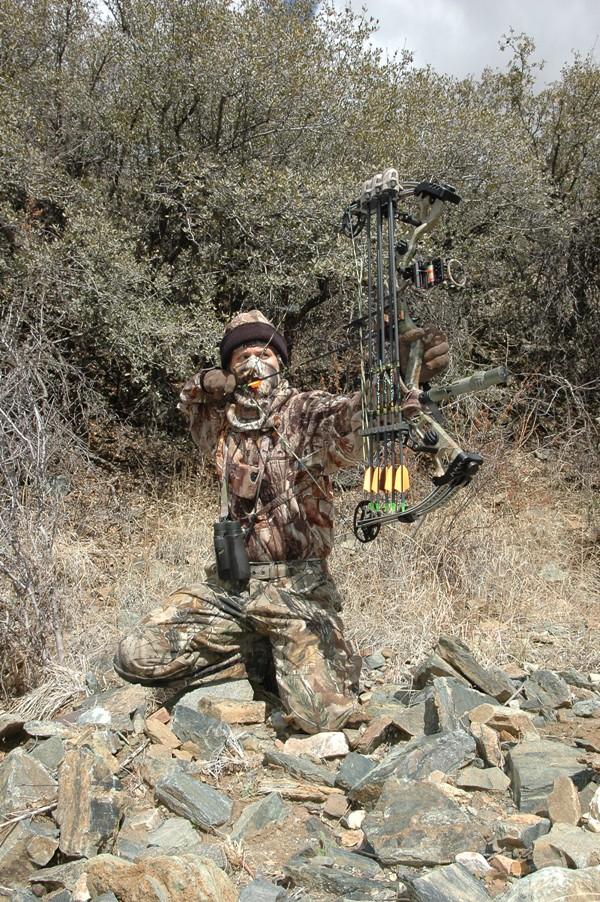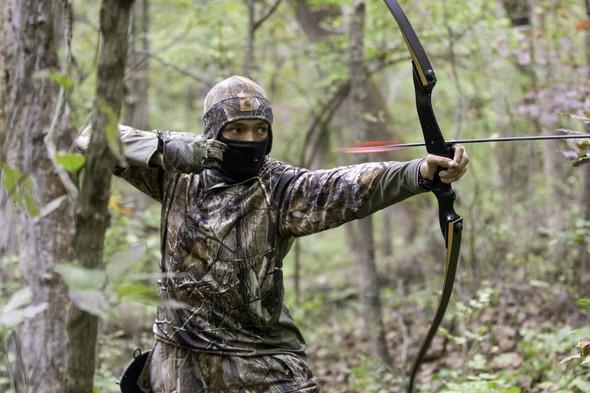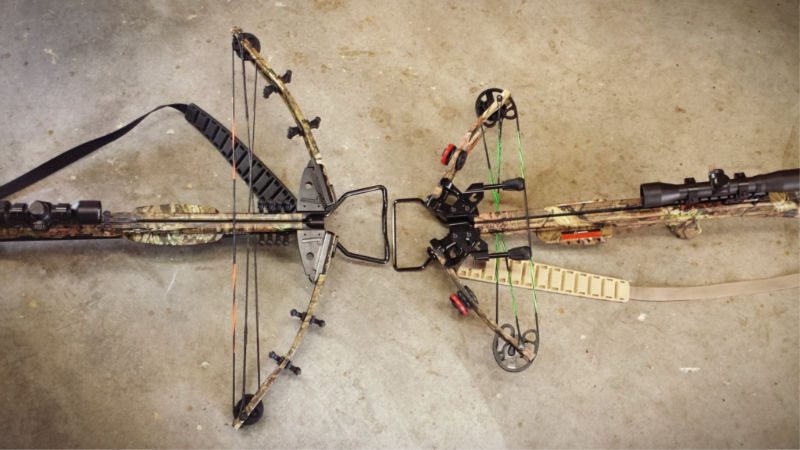
Here are some early October deer hunting tips to maximize your harvest. Even though the big rush of scrape-making is not expected until October's end, there are already signs that buck activity may be increasing. The largest bucks are opening their primary woods scrapes. I had 4 different bucks hit a scrape recently when I put my camera on the scrape. All of them were in daylight photos so I would follow the patterns of the bucks.
Early october deer hunting tactics that work well include light rattling
Light rattling, a great hunting tactic for deer hunting in the autumn, is a good option. To rattling well, you need to imitate the sound of two brothers arm wrestling. Do not attempt to emulate a knock-down or drag-out fight. Instead, mimic buck antlers twirling against each other. After velvet has blown off, buck sparring begins. Buck activity during this period is less aggressive but still essential. A soft social buck call is a good way to sell the ruse.
Bucks typically shed their velvet during the early part the rut. You can scare bucks away with light rattling. The sound of sparring can be a deer's way to associate estrus with a challenge.

High-pressure days following a front blowing through are the best
After a cold front, temperatures remain at 65-35°F. Buck movement and activity are also affected. On the backside of the front, moderate winds can be tolerated. High-pressure systems can put mature bucks on their feet. This makes them more inclined to wander under stands. Hunting on high pressure days, following a front blowing through, is the best way to achieve maximum success.
Stationary hunters have an advantage with the New Moon. This is because the setting moon coincides closely with the setting Sun, which is deer's favorite food source. The New Moon will also increase the amount of daylight hours during which deer move. This pattern will last for less time on Sept. 7th and 8. The high-pressure system usually blows through the night hours so hunters should plan for that time.
Avoid feeding areas
Avoiding areas where deer feed is one of the best hunting tips in October. This is a crucial time of year to harvest acorns. The deer will often scratch at feeding areas while they search for acorns. It's important to note that feeding areas don't happen randomly. Bucks will only visit areas that are more popular than other deer.
Another way to avoid attracting a large group of deer is to hunt in the morning or evening. Bucks will typically be in their late summer feeding patterns, but you can still find bachelor groups during this time. If you want to hunt large groups, it is worth hunting in the evenings or mornings. Although deer are not active during daylight hours (though they may still move around a lot),

Avoid low-key activity
The first month of October is when mature bucks are usually not active and don’t move far. This means that if you plan to hunt the field edges, you may not see a buck for days or even weeks. Smart hunting is key to avoiding this. Choose a location close to the core of the buck. Keep your October's value high.
Even though hunting during this period can be beneficial, it's important not to forget that buck activity tends downwards during these times. You can avoid this by aligning your hunting efforts to the deer’s preferred time of day. Hunting in early October is best if you wait for the deer to come out and use your call. Social grunts are the best for early season deer. A good way to get a response is tickling your tines.
FAQ
Is it allowed to hunt bears in Alaska
Yes, bear hunting is legal in Alaska. Bear hunters may use traps and snares in order to capture them. Some hunters use traps and snares to capture bears. Others use dogs to locate bears.
Bear hunting is regulated by the Alaska Board of Game. Before going out in the woods, hunters need to have a bear tags.
Denali National Park Preserve is a popular spot for bear hunting. You can even take part in guided hunts that charge a lot of money to kill bears.
What are the benefits of hunting?
Hunting is a long-standing tradition that has been practiced in many cultures. It was used for food and shelter as well as tools and medicine. Even today, hunters still hunt for sport but also food and recreation. The meat from hunted animal is usually consumed immediately following killing. However, the skin, feathers, bones, antlers horns, teeth and hooves of the animals may be sold as trophy parts.
Hunting isn't just a way of eating; it's a lifestyle.
People who hunt have strong family ties and friendships because they spend time together. They share their stories and memories over meals and around campfires.
Hunting is a way for hunters to enjoy the natural world and wildlife. This helps them to appreciate all that life has to offer.
When they look after game animals, they are taught responsibility and respect.
Because they practice conservation, hunters become better citizens. They help protect habitats and species. They are aware of how much land and water is needed to survive.
Hunters make up a part of a larger group. Their families are dependent on them. They work together. They support local business.
Hunters are known for their generosity. Many hunters contribute money to charity organizations that aid children, the elderly, veterans, and others.
Hunters have the option to volunteer their time to help others in need. They could volunteer with the Red Cross, Humane Society or Humane Society.
What do I need to know about hunting?
Hunting success requires that you understand the movements and habits of your animal as well as how to avoid injury.
It is important that you are familiar with your state's hunting laws. Certain types of hunting are allowed in some states, while others ban it entirely.
Other factors include weather conditions, terrain, and the type of weapon you use.
When you decide to pursue this hobby, you should consider whether you want to hunt alone or with friends and family.
Most hunters prefer hunting with others. Because this helps you stay focused on your goal. If you are by yourself, you might miss your shot.
Hunting is a process that requires extensive preparation. To hunt at the best places, you will need to plan.
Your weapons must also be prepared. Before you leave for home, make sure to clean and check that your guns are functioning properly.
You should always wear proper clothing when you are hunting. Make sure you dress appropriately for the weather and the terrain.
Be sure to have plenty of water and food. You should also carry extra ammunition and supplies just in case something happens.
You shouldn't leave anything behind. It might get lost or damaged.
You should pick a safe area that is free from predators before you go hunting.
Make sure you follow the rules set out by the government. These regulations protect both wildlife, and humans.
Is hunting dangerous?
Yes, it is possible to get hurt while hunting.
There are many ways that you can injure someone else.
One way is through improper shooting techniques. It is possible to shoot at the wrong angle and hit the wrong parts of the animal.
Another possibility is to be attacked by another pet.
Every year, there are many hunting accidents. Guns are responsible for many people being killed or seriously hurt.
Hunters are advised to keep their guns loaded until they reach their destination.
They should also make sure their guns are not loaded when they go into the woods.
Always keep an open mind. Listen for the sounds and be attentive to your surroundings.
Avoid interacting with animals unless your are ready to defend.
Never chase after prey. Instead, just wait patiently for them.
Don't take shortcuts. They could cause injury or death.
Be cautious around cliffs and other locations where it is difficult to see below.
Avoid streams and rivers. These areas can flood suddenly.
When hunting, it is important to avoid alcohol consumption. It can affect your judgment and slow down your reaction times.
Keep all safety equipment close to you. Always carry a first-aid kit and flashlight.
It is crucial to be able respond to an emergency. You don't need to know how to do CPR or first aid. Find someone who does.
Statistics
- Licenses dropped from a peak of roughly 17 million in the 1980s to 15 million in 2019, according to The Seattle Times. (stacker.com)
- Thanks to the 1937 Pittman-Robertson Act, an 11% excise tax was placed on the sale of firearms, which were then used for conservation. (stacker.com)
- According to the Wildlife Restoration Act, passed in 1937, most of the state conservation efforts are funded through hunting and fishing license sales and firearms sales. (stacker.com)
- - Percent of residents with paid hunting licenses: 0.7%- (stacker.com)
External Links
How To
How to hunt wild turkeys
Wild Turkeys are birds that can be found in North America. They are most common in Texas, Oklahoma, New Mexico, Arizona, Colorado, Utah, California, Nevada, Idaho, Wyoming, South Dakota, Montana, and Washington. Wild Turkeys eat insects, grasses and seeds. Some areas may allow them to eat berries, nuts, and fruit from trees. Their diet keeps them healthy and strong. The feathers of wild turkeys can be used to make hats and clothes. The meat from their breast is eaten.
These tips will make hunting wild turkeys safe. Wear long pants and close-toe shoes. Avoid wearing perfume or any cologne. They attract predators. If you see a predator, do not run away. Instead, move slowly towards your vehicle. Keep calm and collected as you approach birds. It may take several attempts to get close enough to the bird to allow you to capture it. A shotgun with 00 buckshot should be used when shooting at wild turkeys. Shoot only one shot at a wild turkey.
If your gun jams try again later. To avoid getting hit by flying pellets, duck behind a tree or car. Lucky enough, a hunter may come and clean up after you.